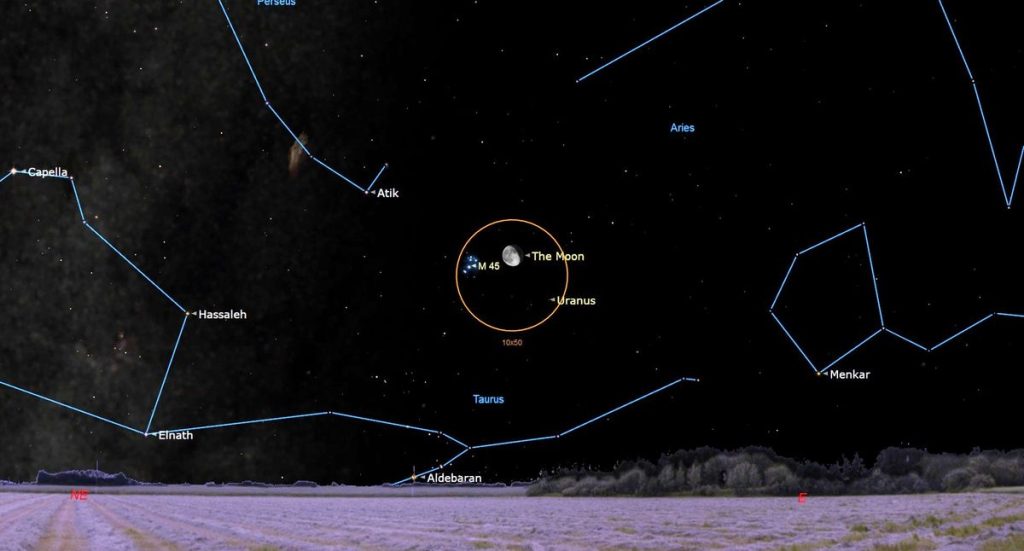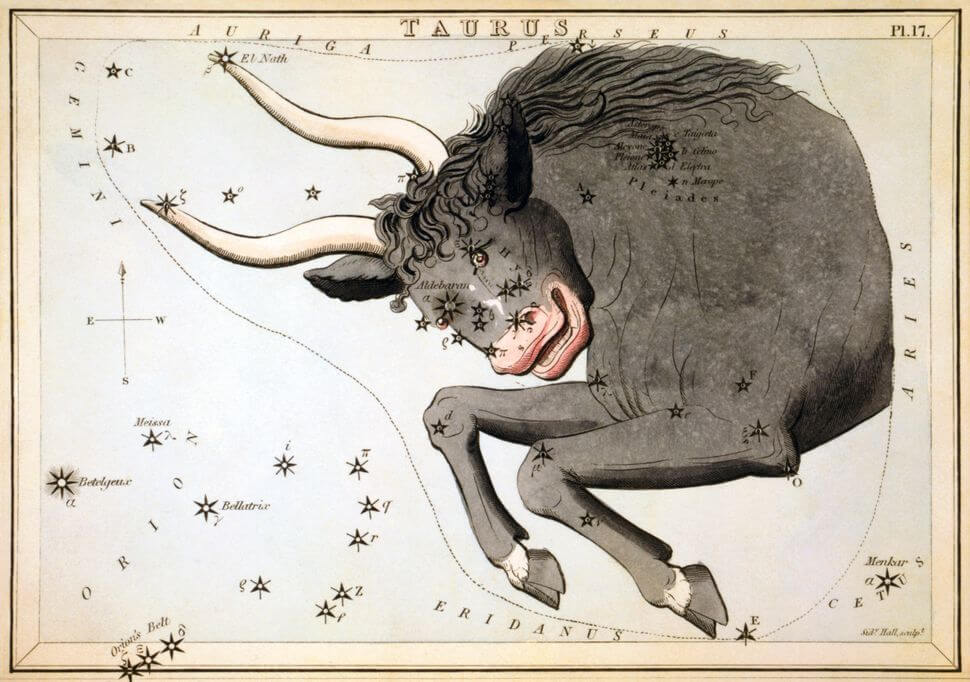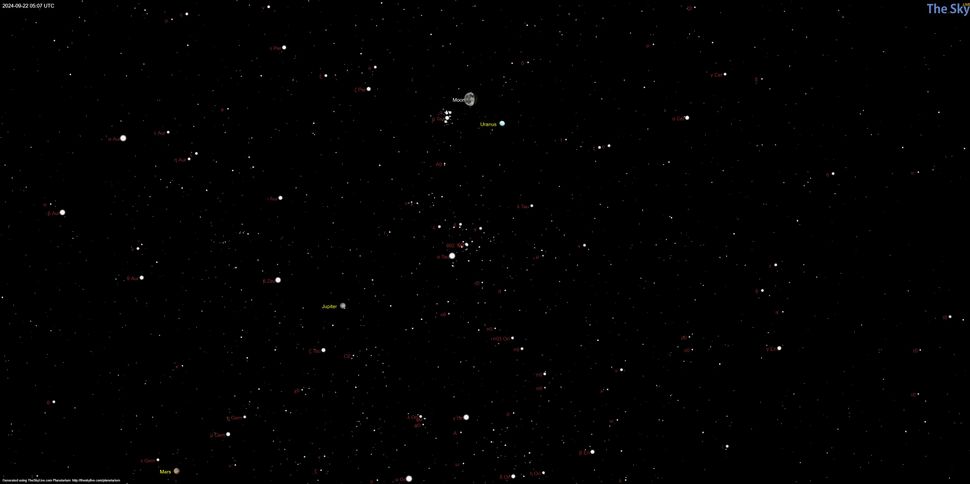
See the moon meet up with the Seven Sisters of the Pleiades this weekend (Image Credit: Space.com)
During the morning hours of Sunday, Sept. 22, skywatchers across much of the western US will be able to watch as a waning gibbous moon — 75 percent illuminated by the sun — crosses in front of probably the most noteworthy and popular of all the star clusters in the sky: the Pleiades.
The Pleiades cluster (also known as Messier 45 or M45) can be found low in the east-northeast part of the sky this week around 10 p.m. local daylight time. By 4:30 a.m., they are literally soaring nearly overhead, high in the south.
Sunday’s event, known to astronomers as an occultation, is part of a series of such events of the moon engaging with this famous group of stars that will continue for the next few years. We will have more to say about this upcoming event a bit later, but first let’s talk about the Pleiades themselves.
A storied star pattern
Few star figures are as familiar as the Pleiades, known also as the Seven Sisters. Anyone having difficulty in recognizing various stars and constellations should start with the Pleiades, because there is nothing else like them in the sky and nobody can look very long at the heavens on a winter night without noticing them and wondering what they are.
Located in the zodiacal constellation of Taurus the Bull, they mark the bull’s shoulder.

To the average eye, this group looks at first like a shimmering little cloud of light. But further examination, aided by good eyesight, will reveal a tight knot of 6 or 7 stars, though some have recorded more under excellent conditions.
Alcyone is the brightest sister. She is accompanied by Maia; Asterope I and II (known as the double star 21 Tauri); Taygeta; Celaeno; and Electra. Lastly, there is Merope, a star surrounded by a beautiful cloud of cosmic dust particles producing a blue reflection nebula. Atlas and Pleione represent the girls’ father and mother.
Eclipse of the Pleiades
As noted earlier, on the morning of Sept. 22, a 19-day-old moon will pass through the Pleiades. Most of the western US will be able to watch the brightest members of this star cluster pass behind the disk of the moon.
In the upcoming occultation, because the moon is in its waning gibbous phase, stars will disappear behind its bright limb, where you’ll need a telescope to watch them go, and will reappear out from behind the moon’s dark limb, where binoculars may suffice.

Whether there is a lunar occultation or not, the moon is always stunning seen up close. If you want to see take a good look at the moon, our guides to the best telescopes and best binoculars.
And if you want to try your hand at taking your own photos of the moon during this event or any other, we have a guide for how to photograph the moon, as well as lists of the best cameras for astrophotography and best lenses for astrophotography.
Where and when to look
Another factor that will come into play for those in the eastern and central US and Canada is that for these regions, the moon will begin to encroach upon the Pleiades after sunrise in the East, while for the central states’ morning twilight will be advancing which means seeing the stars in the cluster will become increasingly difficult as the background sky becomes progressively brighter, or worse, both the disappearance and reappearance will come after sunrise.
The situation improves over the Mountain Time Zone, where the occultation begins in a dark sky, while the end takes place during twilight when the sky is still generally dark. For those in the Pacific Time Zone, the entire occultation takes place in a dark sky from start to finish.
For instance: seen from the Chicago area, Electra will disappear around 5:01 a.m. CDT in a dark sky, but reappears during mid-twilight at 5:54 a.m. Alcyone disappears during bright (civil) twilight at 6:08 a.m. but reappears after sunrise.
By comparison, from Denver, Electra disappears and reappears in a dark sky at 3:43 a.m. MDT and 4:13 a.m. respectively. Alcyone disappears in a dark sky at 4:36 a.m. and reappears during mid-twilight at 5:57 a.m. Finally, Atlas disappears at 5:36 a.m. but will reappear in a bright twilight sky at 6:39 a.m. Another Pleiad, Maia, will be covered but as seen only from the southern US.
And that’s it for bright stars.
For Universal Times (UT) predictions at many other locations, as well as maps showing the visibility zone, click below on the name of the star. Data is courtesy of the International Occultation Timers Association (IOTA).
Alcyone, Atlas, Electra, Maia.
Be sure not to miss our night sky tonight page and monthly skywatching calendar for more celestial events to take in!
Joe Rao serves as an instructor and guest lecturer at New York’s Hayden Planetarium. He writes about astronomy for Natural History magazine, the Farmers’ Almanac and other publications.
Editor’s note: If you get a great picture of the moon during its close encounter with the Pleiades, and would like to share it with Space.com’s readers, send your photo(s), comments, and your name and location to spacephotos@space.com.





